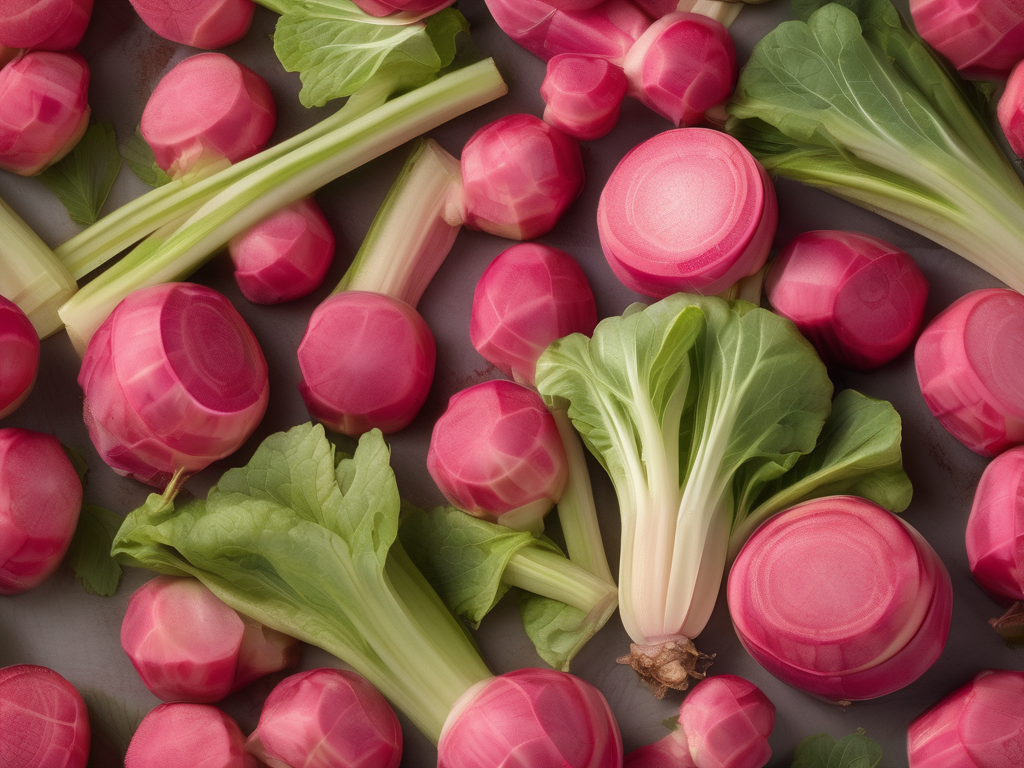
Signs that Garden Rhubarb has Gone Bad and is Unsafe to Eat
Get Your Free Food Safety Cheat Sheet
30 most common foods with instant answers. Print it and stick it on your fridge—completely free!
Signs that Garden Rhubarb has Gone Bad and is Unsafe to Eat
Garden rhubarb, with its vibrant red stalks and tart flavor, is a popular ingredient in pies, jams, and compotes. However, like all fresh produce, rhubarb can spoil if not stored properly. It's essential to know the signs that garden rhubarb has gone bad to avoid consuming spoiled or potentially harmful food. In this blog post, we will explore the key indicators that your garden rhubarb is no longer safe to eat and provide tips on how to store it correctly. (Garden rhubarb)
How to Tell if Garden Rhubarb is Spoiled
Visual Signs
- Mold: Mold growth on the surface of rhubarb is a clear indicator that it has spoiled. Look for fuzzy white, green, or black spots on the stalks.
- Slimy Texture: If the rhubarb feels slimy to the touch, it has likely started to break down and is no longer safe to eat.
- Discoloration: Any significant discoloration, such as dark or mushy spots, indicates that the rhubarb has deteriorated.
Smell and Taste
- Off Odor: Spoiled rhubarb may emit a foul or fermented smell that is distinctly different from its usual tart aroma.
- Bitter Taste: If the rhubarb tastes bitter or off, it is best to discard it.
Texture
- Softness: Fresh rhubarb should be firm and crisp. If the stalks feel soft or mushy, they have likely gone bad.
- Stringiness: Excessive stringiness in the stalks can also be a sign of spoilage.
Proper Storage Tips for Garden Rhubarb
To prolong the freshness of garden rhubarb and prevent spoilage, follow these storage tips:
- Refrigerate: Store unwashed rhubarb in the refrigerator in a perforated plastic bag to maintain moisture balance.
- Trim and Wash: Before storing rhubarb, trim the ends and wash it thoroughly under cold water.
- Freezing: If you have an abundance of rhubarb, consider freezing it for long-term storage. Blanch the rhubarb in boiling water for a few minutes, then plunge it into ice water before freezing.
- Avoid Moisture: Excess moisture can cause rhubarb to spoil quickly, so make sure it is not stored in a damp environment.
- Use Fresh: Garden rhubarb is best enjoyed fresh, so try to use it within a few days of harvesting for optimal taste and quality.
Safety Precautions when Handling Garden Rhubarb
- Wash Thoroughly: Always wash rhubarb under running water before consuming to remove any dirt or contaminants.
- Avoid Leaves: The leaves of rhubarb contain oxalic acid, which can be toxic if ingested in large quantities. Always trim and discard the leaves before using the stalks.
- Cooking: Cooking rhubarb at high temperatures can help reduce any potential bacterial contamination, making it safer to consume.
Conclusion
In conclusion, garden rhubarb is a delicious and versatile ingredient, but it is essential to monitor its freshness to ensure it is safe to eat. By being aware of the signs of spoilage and following proper storage guidelines, you can enjoy fresh rhubarb in your favorite recipes without any concerns about food safety. Remember to inspect your rhubarb regularly, store it correctly, and practice good food handling habits to maintain its quality and flavor. With these tips in mind, you can savor the tangy goodness of garden rhubarb without any worries about it going bad. (Garden rhubarb)
Authoritative Food Safety References
These agencies and university labs inform every tip and health precaution we publish.
USDA FoodKeeper – Cold Storage Guidelines
Official refrigerator, freezer, and pantry timelines maintained by the U.S. Department of Agriculture.
Visit USDA FoodKeeperFDA Produce Safety Rule & Grower Guidance
Field-to-fridge handling practices that prevent contamination of fruits, vegetables, and leafy greens.
Visit FDA Produce SafetyCDC Foodborne Illness Prevention Hub
Surveillance-backed guidance on pathogens, symptoms, and steps to reduce foodborne illness risk.
Visit CDC Food SafetyUC Davis Postharvest Technology Center
University research detailing optimal storage atmospheres for produce after harvest.
Visit UC Davis PostharvestPenn State Extension – Home Food Preservation & Safety
Peer-reviewed extension bulletins on safe canning, chilling, and reheating practices.
Visit Penn State ExtensionGet Your Free Food Safety Cheat Sheet
30 most common foods with instant answers. Print it and stick it on your fridge—completely free! Want more? Upgrade to the complete guide with 70+ foods.
Scan your food directly and get instant safety info using our AI-powered camera feature.